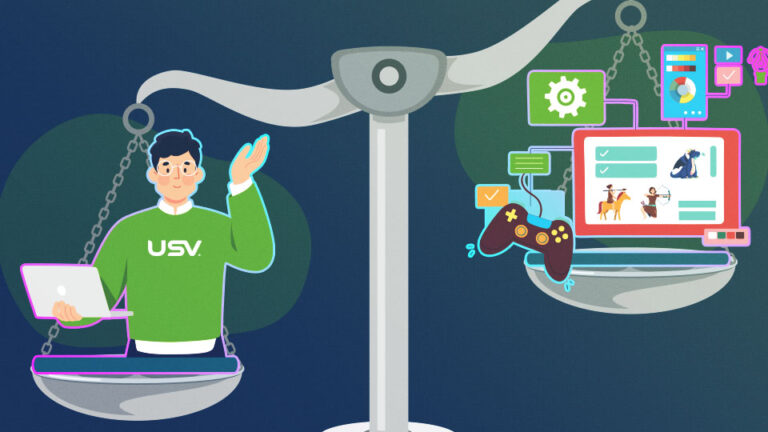Sound design is the process of creating and manipulating sounds to enhance the audience’s experience of a given medium – such as movies, TV, video games, and more. Can you imagine watching a scary movie without suspenseful music or playing a video game with no sound effects? Sound design is a crucial aspect of any production that seeks to captivate and immerse its audience. If you’re interested in becoming a sound designer, here are five things you may not know.
-
Sound design involves more than just recording audio
Sound design is not merely the act of recording audio. It is a multifaceted process that involves the creation, editing, and manipulation of various sound elements to create a cohesive and immersive audio experience. Sound designers use various tools and techniques to enhance the soundscape of a given medium, from Foley sound effects to digital audio processing. In addition to recording audio, sound designers also create and manipulate audio through software, digital audio workstations, plugins, and effects processors.
-
Sound design is critical to storytelling
Sound design is essential for good storytelling. It can evoke emotions, create a sense of place, and enhance the overall narrative. From subtle sound effects to ambient soundscapes, sound designers use a range of techniques to transport the audience into the world of the story. For example, in a horror film, the sound of a creaking door or a distant scream can create tension and enhance the sense of dread. In a documentary, ambient soundscapes can immerse the viewer in the world of the subject.
-
Sound design can make or break a production
Sound design can have a significant impact on the overall quality of a production. Poorly designed sound can distract from the narrative, detract from the audience’s immersion, and even lead to disinterest or disengagement. On the other hand, well-designed sound can enhance the audience’s experience, add depth and texture, and make a production stand out. Experienced and skilled sound designers are always in demand to create the best possible audio experience.
-
Sound design requires collaboration
Sound design is not a solitary process. It requires collaboration between sound designers, directors, producers, and other creative people. Effective communication is essential to ensure that the sound design aligns with the creative vision and narrative of the production. Sound designers must be able to work with a range of stakeholders, from audio engineers to composers, to create a cohesive and immersive audio experience. Additionally, sound designers must be open to feedback and willing to make adjustments to their work as necessary.
-
Sound design is constantly evolving
New technologies and techniques in sound design are emerging all the time, and sound designers must keep up to date with the latest trends and innovations. From advancements in digital audio processing to new approaches to Foley sound effects, sound designers must stay current to remain competitive in the industry. Additionally, sound design is often shaped by cultural and societal changes, and sound designers must be aware of these trends and adapt their work accordingly.
In conclusion, sound design is a crucial aspect of any audiovisual medium, and it requires a skilled and experienced approach to create an immersive and engaging audio experience. By understanding the importance of sound design, the collaboration required, and the need to stay up to date with the latest trends and technologies, sound designers can create compelling audio experiences that captivate and immerse audiences.
Prepare for Your Dream Career at USV
If you dream of a career in sound design, University of Silicon Valley (USV) can help turn that dream into reality. Check out our Bachelor of Science in Digital Audio Technology program which introduces students to the broad discipline of music and audio production, from music composition and recording through to digital sound design and interactive audio applications.
This highly technical and hands-on program covers principles of sound synthesis, music and acoustics, and applies that theory in collaborative and individual recording and production projects. Students are immersed in a recording studio environment as well as purely digital production pipelines. Projects are often interdisciplinary, with teams of students from different programs working on realistic productions for audio and screen-based projects.
USV can prepare you for success in the creative-technology industries by providing an extraordinary, real-world education inspired by the entrepreneurial spirit of our Silicon Valley location.
Apply now, request more info, or come visit our campus, and get the training you need for this rewarding career.


